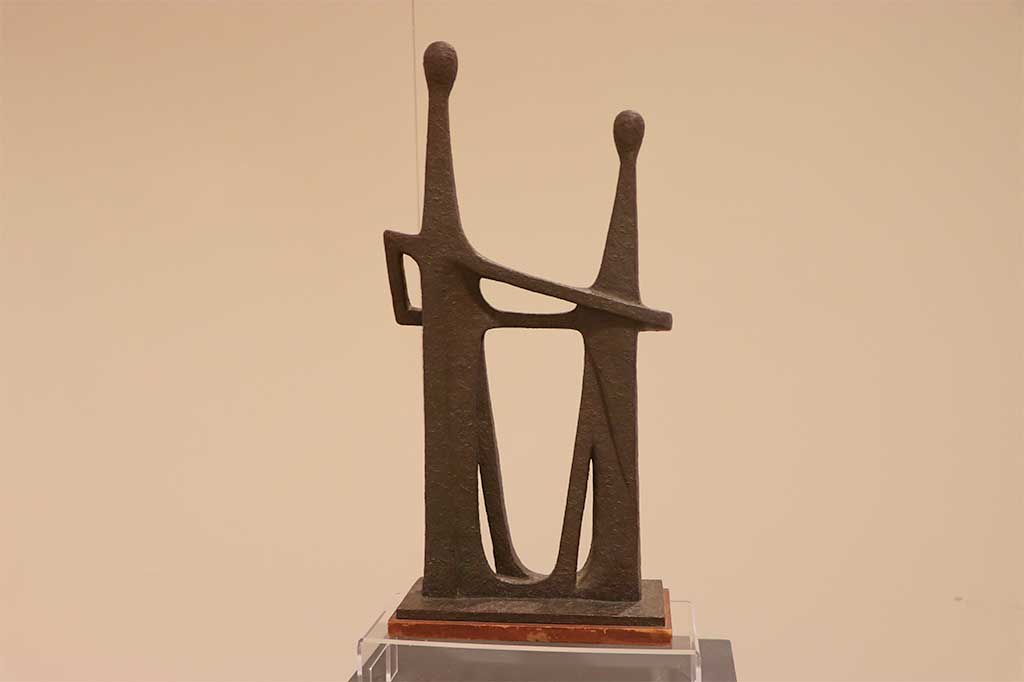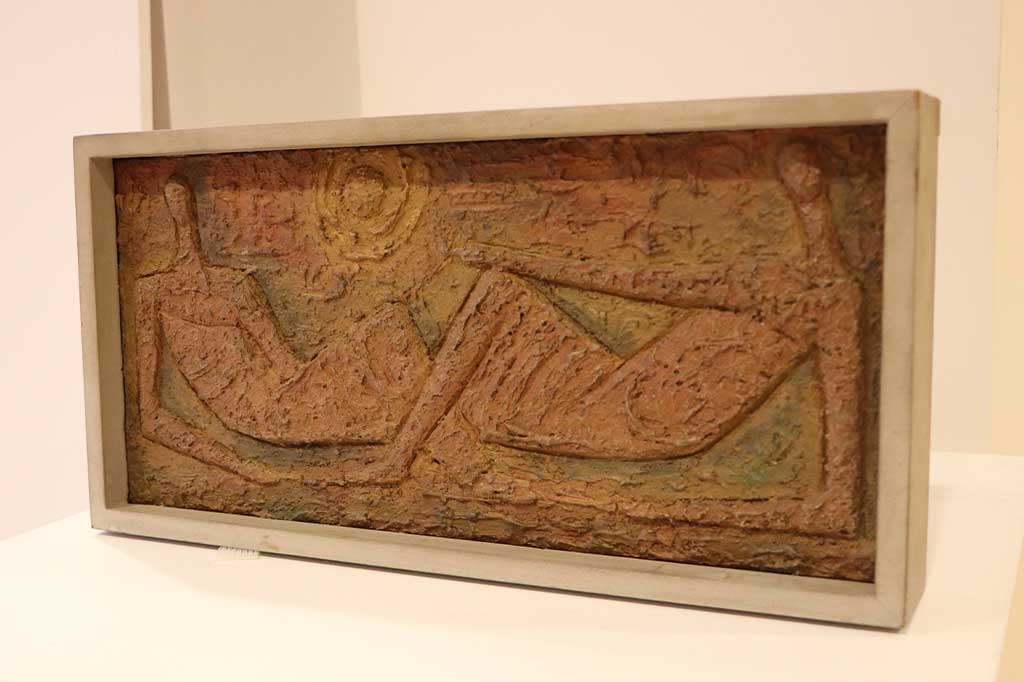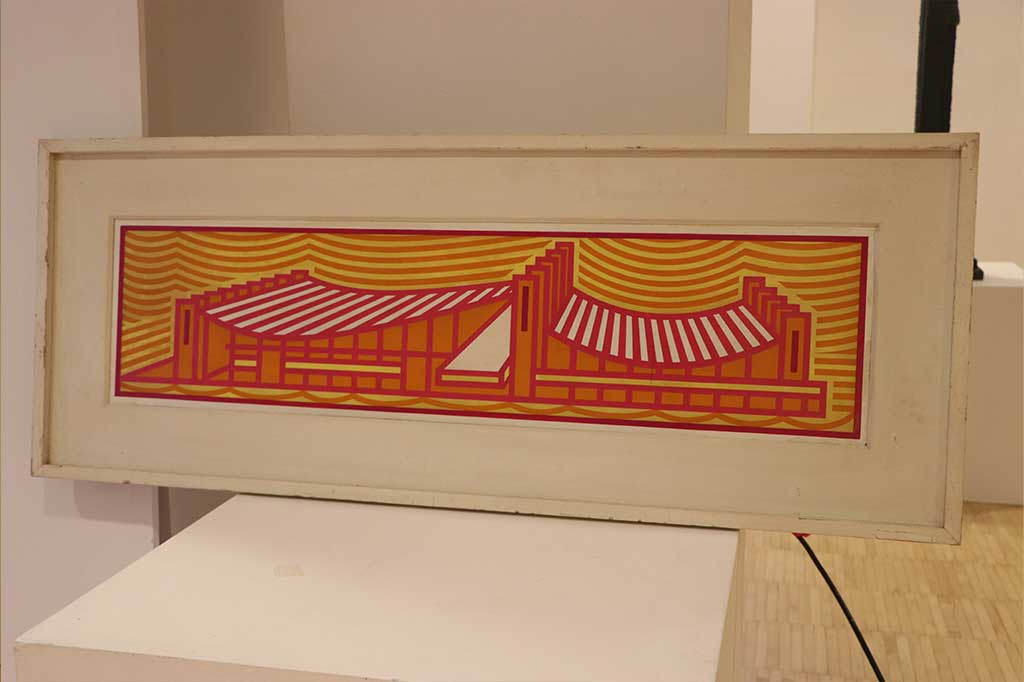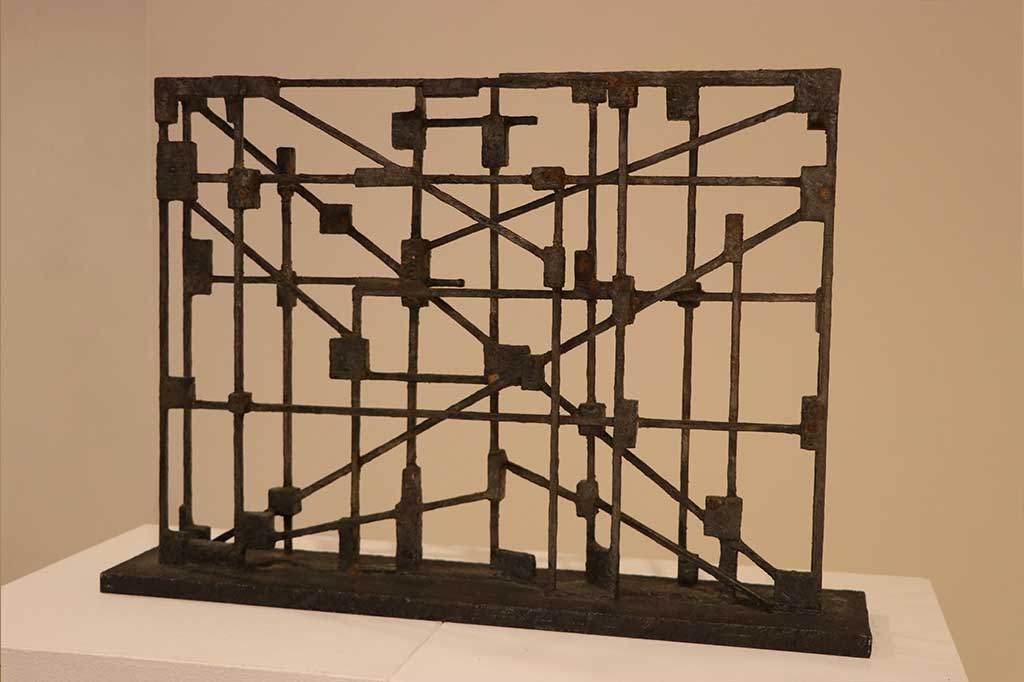Search WCSU
WCSU Essentials
Automatic translation disclaimer
Translation of this page is provided by the third-party Google Translate service. In case of dispute, the original language content should prevail.
La traducción de esta página la proporciona el servicio Google Translate de terceros. En caso de disputa, prevalecerá el contenido del idioma original.
La traduction de cette page est fournie par le service tiers Google Translate. En cas de litige, le contenu de la langue originale prévaudra.
WestConn to exhibit Mexican art treasures from its archives









Who would think that Western Connecticut State University might be at the center of the Mexican art world, even for a short time?
No one. Until WestConn archivist Brian Stevens recognized the value of some pieces in the university’s collection, and started, with Lori Robeau and Sarah Anderson Lock from the Department of Art, putting together an exhibit.
“Sin Indiferencia” (Without Indifference) will run in English and Spanish from Thursday, Oct. 2, through Dec. 7 in the Art Gallery at the School of Visual, Performing and Communication Arts on the Westside campus, 43 Lake Ave. Extension. The opening reception will be held from 6 to 8 p.m. on Oct. 2 and is free and open to the public, as are the rest of the viewing dates.
“Exhibiting this material enhances a spirit of inclusion that the university shares with the Latin community and shows that WestConn has deeper and longer connections with Latin cultures than many would have expected,” Stevens said. “We’re recognized by the federal government as a Hispanic-Serving Institution, and here’s a great opportunity to do a bilingual exhibit of our material, and to have something accessible in its original language.”
The show features several sculptural models, called maquettes, by the artist Herbert Hofmann-Ysenbourg, a German ex-patriot who made Mexico City his home before the outbreak of World War II. Many of Hofmann-Ysenbourg’s large Bauhaus-inspired sculptures still decorate public spaces, including at the Museum of Modern Art in Mexico City. (“Sin Indiferencia” is the name of a Hofmann-Ysenbourg’s sculpture.)
One of Hofmann-Ysenbourg’s maquettes decorated a meeting room in WestConn’s Ruth Haas library and was eventually moved to the archives collection. No one knew how it got there, and Stevens said he didn’t pay much attention to the piece until he was asked to survey a collection left to the university by a former business school dean, Dr. Al Stewart.
Stewart’s endowment included several sculptures of a style that Stevens recognized. He confirmed that they, too, were the work of Hofmann-Ysenbourg. Stewart, a world traveler and collector, had probably donated the first piece of Hofmann-Ysenbourg’s art to the library years earlier.
Stewart was dean of the Ancell School of Business during two separate stints and had been an executive at Union Carbide for several years. He also served as a U.S. Navy officer during WWII, one of the few Black men to break into senior ranks during that time of institutional racism.
“Stewart acquired around a dozen works from Mexico that eventually found a home at WestConn,” Stevens said. “Unfortunately, though Stewart bequeathed most of these items, they had long been separated from their historical context and the story of their provenance. Because these pieces were unidentified and without a story, it is fortunate that they were never discarded. The recognition of the art’s humanity now allows it to be seen, and this story we hope will engage viewers of the work, both for its artistic qualities and influences, but also for its immigration story.”
Stevens conceptualized a show that would feature the stories of the two men and their lives, with the WestConn nexus. As it happened, the university archives also hold artifacts of indigenous Mexican fiber artists collected by longtime WestConn history professor Truman Warner, and artist Donald Moss, who created marketing materials for the 1968 Olympics in Mexico City and also taught at WestConn.
The three collections will all be shown in the exhibit, which also features an interview with a Hofmann-Ysenbourg expert and excerpts from a book on the artist that was published only in Mexico.
With the benefit of a Macricostas School of Arts and Sciences CreaTechnology Award, WestConn students translated descriptions of the work for the exhibition. World Languages Professor Dr. Alba Hawkins, Art Professor Sabrina Marquez, Visual Arts Assistant Lori Robeau, and Gallery Curator Sarah Anderson Lock also worked with Stevens over the past two years to create the show. An online history of the artists, Stewart, and the overall exhibit has also been produced and will be available on the website of the WestConn archives.
“These works celebrate a little-known aspect of WestConn and Danbury’s immigration story,” Stevens said. “They highlight how we are enriched by embracing the diversity in our communities, and promote cultural conversations.”

